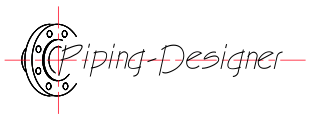Euler Number
Euler number formula |
||
|
\( Eu \;=\; \dfrac{ \Delta p }{ \rho \cdot U^2 }\) (Euler Number) \( \Delta p \;=\; Eu \cdot \rho \cdot U^2 \) \( \rho \;=\; \dfrac{ \Delta p }{ Eu \cdot U^2 }\) \( U \;=\; \sqrt{ \dfrac{ \Delta p }{ Eu \cdot \rho } }\) |
||
| Symbol | English | Metric |
| \( Eu \) = Euler Number (See Physics Constant) | \( deminsionless \) | \( deminsionless \) |
| \( \Delta p \) = Perceptible Change in Pressure | \(lbf \;/\; in^2\) | \(Pa\) |
| \( \rho \) (Greek symbol rho) = Density | \(lbm \;/\; ft^3\) | \(kg \;/\; m^3\) |
| \( U \) = Characteristic Velocity | \(ft \;/\; sec\) | \(m \;/\; s\) |
Euler number, abbreviated as Eu, a dimensionless number, used in fluid dynamics problems. It is different than the constant that carries the same name, the Euler Number. Euler Number is used for analyzing flow where the differential pressure between two points is important. Fundamentally, it is the relationship between local pressure drop caused by a restriction and and the volumetric kinetic energy in the flow stream. The number is a method of characterizing the energy losses in the flow stream. When friction losses equal zero, as in a perfect flowstream, the Euler number is zero.

